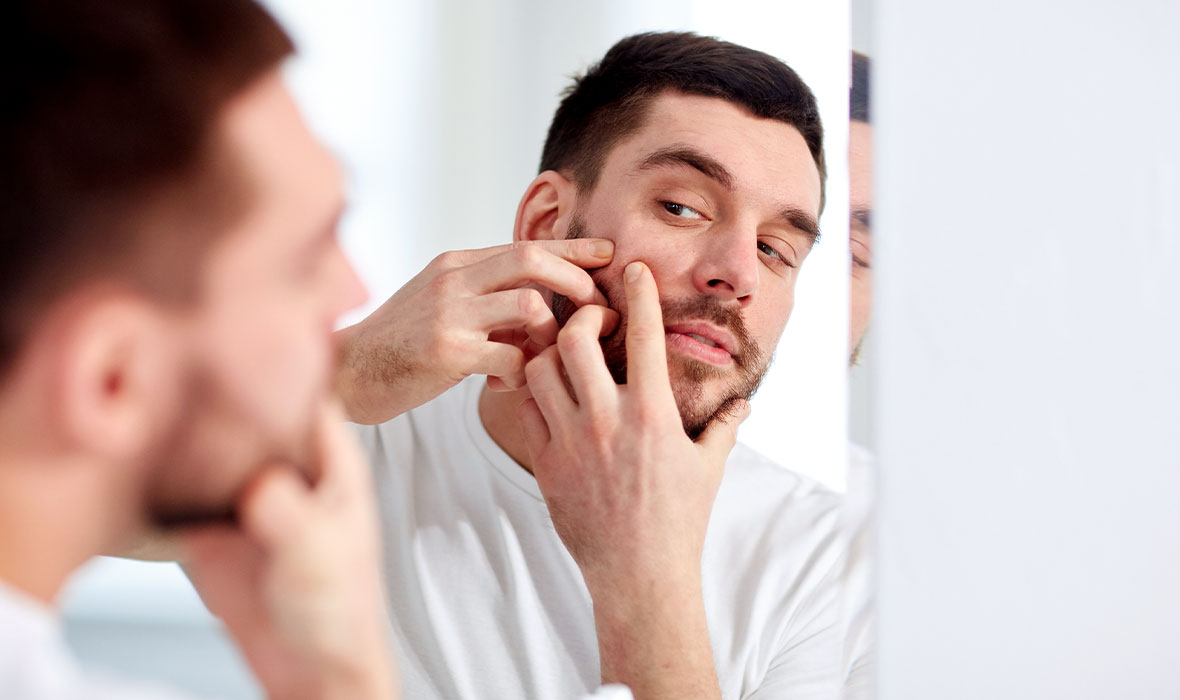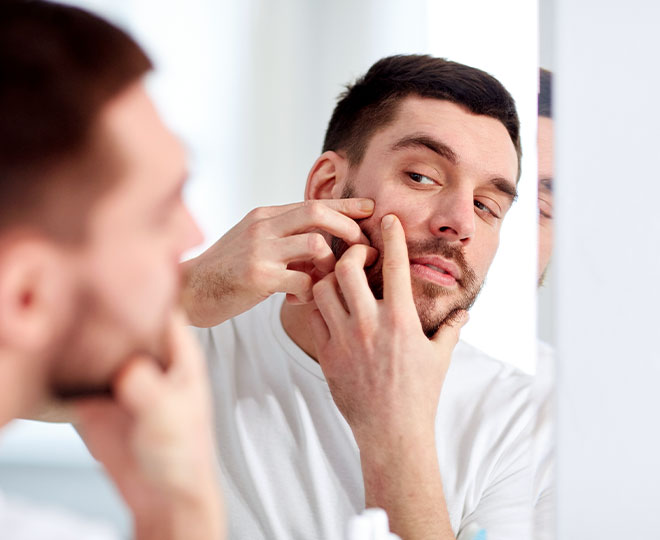If you see a small bump on your body, you’re probably going to assume it’s a pimple, and want to get rid of it immediately. However, you may need to consider if it’s an ingrown hair. Pimples closely resemble ingrown hairs, so it’s easy to mistake the two. Both issues have different causes, making it essential to correctly identify them. Taking a closer look can reveal some unique characteristics to help you differentiate the two and pick out the appropriate treatment.
How pimples develop
Pimples are the result of excess oil (sebum) and dead skin cells mixing together and getting trapped in the hair follicle (AKA pore). Pressure can build up behind the blockage as more and more oil accumulates and bacteria may join the party as well to form acne. Eventually, this accumulation can burst through the follicle wall, spilling onto the skin and leading to the irritation, redness and swelling you know as a pimple. Closed comedones are known as whiteheads, while open comedones are known as blackheads as they turn black when exposed to the air.
How ingrown hairs develop
Ingrown hairs form in the same location as pimples (hair follicles/pores) but they aren’t caused by foreign materials. Hairs that usually grow straight up from the pore may instead grow sideways and head back through the follicle wall into the skin. This blockage will cause similar redness and swelling to a pimple, making it easy to mix up ingrown hairs and pimples.
How to figure out if it’s a pimple or an ingrown hair
Location is one of the most important factors in determining the difference between pimples and ingrown hairs. If the blemish in question is found in a location you shave, it may be an ingrown hair. As you repeatedly shave the same areas over and over, the hairs may grow back with sharp edges that can easily pierce into your skin.
Women are most likely to find ingrown hairs on their legs, underarms, eyebrows and around their lips. Men may find ingrown hairs around their beards or on their heads if they shave them often.
On the other hand, if you find blemishes on your forehead, nose, shoulders, chest or back, they’re most likely pimples. This isn’t always the case, since it only takes one stubborn hair to grow the wrong direction to lead to an ingrown hair. Paying attention to where your breakouts are appearing is the first step in identifying whether you’re dealing with a pimple or an ingrown hair.
Wherever they’re located, ingrown hairs often come with pain similar to pimples, so that’s unfortunately not a great way to tell them apart. If you’re still unsure, take a closer look at the bump. In the case of an ingrown hair, sometimes you’ll actually be able to see a bit of the hair just beneath the surface of the skin. You may also notice ingrown hairs are often smaller and redder, while pimples can be larger and have less color.
How to help prevent an ingrown hair
Since ingrown hairs tend to develop mostly in areas where you shave, one of the most thorough forms of prevention is to stop shaving, waxing or tweezing the area.
Ingrown hairs will usually heal on their own, so if it’s not too invasive to deal with, or if you only get ingrown hairs occasionally, you can give them a bit of time.
Of course, ingrown hairs can be painful, so it’s best to take steps to prevent them before they pop up. Shaving too close to the skin or not using shaving cream can increase the prevalence of ingrown hairs. You can alter your technique to not go so close to the skin while using shaving cream to cause less skin irritation and to make your shave more comfortable. You can also target the areas you generally get ingrown hairs with a face or body scrub. This can help keep hair lifted away from the skin in places where it tends to grow inward.
More serious or frequent ingrown hairs should be looked at by your physician, as they may require prescription medication to recover. This is especially important if the site is more painful and swollen than normal.
How to treat a pimple
You should first evaluate if your breakout is minor or more significant. If it’s especially swollen or covers a larger area and doesn’t get better with over-the-counter products over time, your skin should be looked at by a dermatologist.
Mild to moderate acne situations can be fought with Proactiv systems such as the ProactivMD® 3-Piece System. It offers prescription-strength retinoid (no prescription needed) to help fight redness and inflammation from acne. It works to restore even skin texture and tone by clearing acne. And, it treats clogged pores that can form blackheads and whiteheads.
The bottom line
Pimples and ingrown hairs can be difficult to tell apart, but doing so can be key to clearing up your skin and making a healthy recovery.






